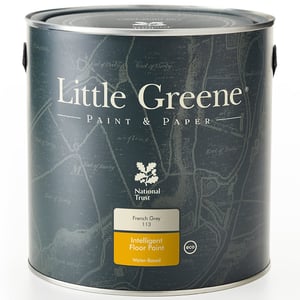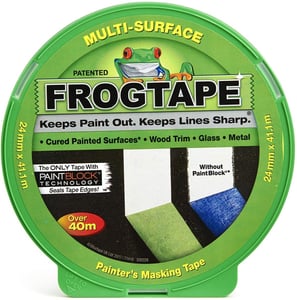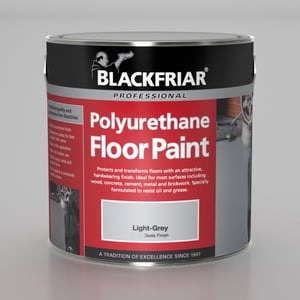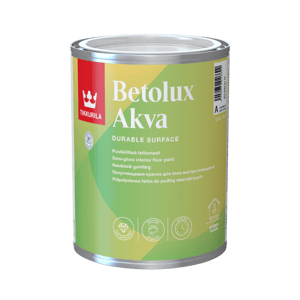How To Paint A Concrete Patio
If you want to inject a little colour and life into your drab, washed-out concrete patio, you can transform it with paint. With our range of concrete paint, you can paint the patio to compliment your home or to provide a compelling contrast that will help your patio stand out. A well-painted patio can last years, shop everything you need to transform your garden at The Paint Shed today.
Here are some simple instructions for painting your concrete patio. It's an easy job that can make the world of difference to your patio area. This quick guide on the preparation and painting of the concrete surfaces will help make the painting go smoother and provide a professional finish.
What do you need to paint a patio?
- Patio paint - specialist concrete floor paint or masonry paint
- Primer
- Filler
- Patio Cleaner
- Paint Brushes
- Paint Rollers

Recommended Patio Paints
Prepare the concrete surface
Start by tidying your outdoor space area, clear it of furniture, flowerpots, and toys then sweep and clean thoroughly to remove any dirt and dust. Cover any plants or landscaping that can’t be removed with tarps or cloth to protect them from chemicals and water run-off. Next, scrub the patio surface to remove grease or any type of grime from the concrete. Grease or oil on the surface will bleed through the new paint, interfering with the longevity of the paint and causing it to discolour.
Remove moss, roots, vines and anything else that has grown on the surface of the concrete before cleaning. It’s probably worthwhile to rent a pressure washer to remove the stubborn grime and stains. Alternatively, you can mix water and some mild detergent and scrub over the concrete using a broom or scrub brush.
If you have previously painted your patio any old paint can be removed with paint-removing solvent and scrapers. This may take you a while, but it is essential for a beautiful painted finish. If you don’t do this, you can end up with bumps and an uneven texture on the surface. Allow for the patio to fully dry before proceeding to the next step.
Even if the patio doesn't appear to be dirty, clean it anyway. Specs of dirt may not be visible but they can ruin the finish of a new paint job. So basically, the better the patio surface, the better quality of your paintwork.
Repair any defects
Clean out any cracks in the concrete with a wire brush, hoover up any dirt and use a broom to make sure the crack is fully clean.
After your surface is clean and dry, use a ready mix concrete patch or a masonry crack filler to make repairs. The concrete manufacturer will normally make recommendations on drying time and tell you when the surface can safely be painted. For best results, repair cracks on completely dry concrete (use a blow dryer if you need to.)
Follow by sanding down the concrete filler with sandpaper to level out your surface, then apply TSP, to clean the surfaces before applying paint. Scrub well into the masonry or concrete surface to ensure that paint will adhere. Only proceed to painting once the concrete is completely dry. You can test the moisture content of your surface by taping down a square of aluminium foil, leave for 24 hours and then remove the square, if the ground is fully dry there should be no condensation on either the concrete or the foil.
Patio Painting Preparation
Painting the surface
For painting concrete in an outdoor area, regular retail paint will not suffice. Regular exterior paint will crack and peel on a concrete surface, which is why trade quality concrete paint is recommended. If you are not sure about which concrete paint would be best to use, ask the paint experts at The Paint Shed for recommendations of concrete paints that are appropriate for our weather conditions and the type of concrete on the patio surface.
When choosing a colour it helps to consider the colour of the exterior of your home and the colour of your outdoor furniture. Bring swatches or images of these colours to the store to find a complementary colour, our staff are always on hand to help.
Consider whether you will need a primer, some paints are self-priming but a concrete primer can help create an even, non-porous surface for you to work on. It can also cut down the number of coats of paint you will need to fully cover your surface.
At the same time as ordering your paint, you should also consider if you require mineral spirits or paint thinner to clean your brushes or spillage. Also, if you are not confident with a brush, you may want to use masking tape to protect the patio edges and door frames etc.
You can use a long-handledbrush or a brush-length extender to make painting less stressful on your knees and back. Start in one corner of the patio using even brush strokes, and work your way outward. Be careful not to paint yourself into a corner, you do not want to have to walk over fresh paint. Remove any tape you have used and finish the look by using a smaller paint brush to fill in your patio edges. Once you have covered the entire patio surface in a light coat of concrete paint, allow to dry completely. This should take approximately 3 to 5 hours depending on the type of concrete paint used.
Remember, it’s better to apply several thin coats, rather than one thick coat, as paint creates a harder surface when thin coats are laid on top of each other. Paint dries (or cures) to different thicknesses, depending on its sheen and chemistry. The length of this process depends on the thickness of the ‘mil’. It’s important that you give your newly painted concrete patio time to dry (cure) before using it. In most cases, this can take several days, depending on climate and humidity.
Popular Concrete Patio Paints
Still have a question about how to paint your patio? Don't hesitate to get in touch with our team of paint experts by calling us on 033 3320 2369 or emailing us at [email protected]










